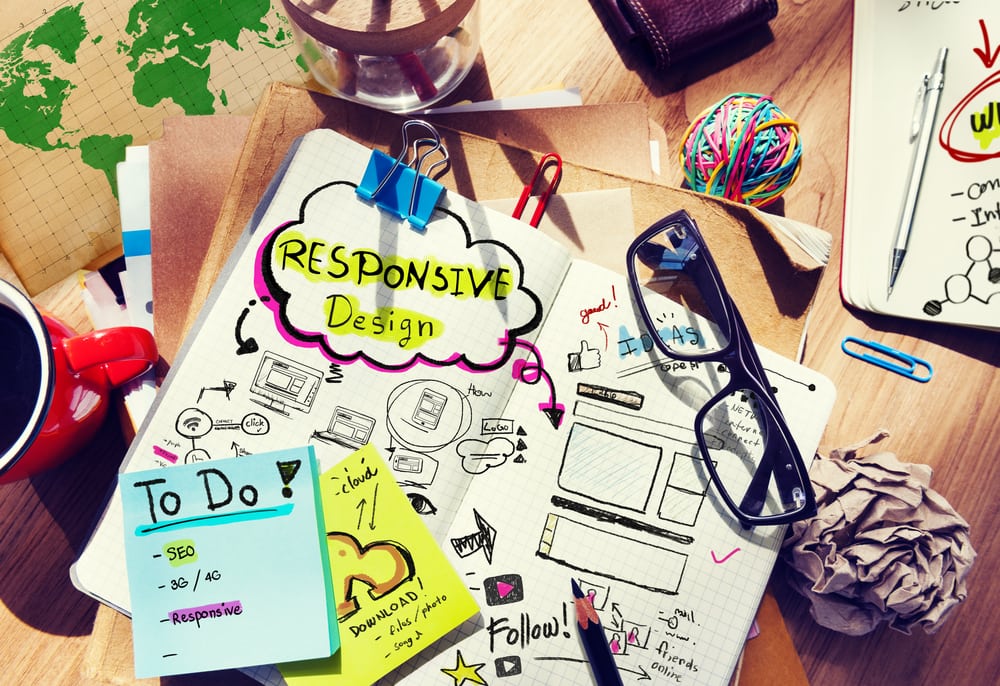Healthcare experiences that work across multiple care settings might be some way off, but customer-driven integrated services have been the norm for web professionals for some time. People expect seamless performance across all devices, and technology that is future proof, backwards compatible and ‘just works’ however you choose to consume. It is an incredible challenge for designers and developers to meet in an efficient, effective and visually pleasing way.
“Not too long ago we used to design websites. A little bit of time passed and we started designing web apps. Now we design product experiences that go across a multitude of devices and platforms. We live in a world where our design solutions are expected to work totally seamlessly across all kinds of different phones, screens, kiosks and televisions and all these amazing devices. Mobile has gone from an afterthought to the forefront of our minds and is constantly driving the core experience.”
Josh Brewer, Industry Conf 2013
This is exacerbated by the proliferation of web browsers. We have grown from the mid 90s gruesome twosome of Internet Explorer and Netscape Navigator into an ever-expanding club of devices, using different platforms, apps, screen sizes and resolutions. Not to mention app or platform versions, multi-lingual support and web accessibility features. When reflecting back there is a stark difference between designing now and back in the ‘good old days’. What will the future hold?
Front and centre of this future is the Internet of Things (IoT) – the backbone of the futuristic techno geek lifestyle where you can set the colour of your lights and room temperature within your home by winking in a certain fashion into your smart glasses, whilst you Segway your route through rush hour listening to the latest podcast streamed over a mobile network through your smart watch to your wireless headphones. Data will flow between animal, vegetable and mineral and anticipate your every quantifiable need.
According to Gartner Inc. there will be nearly 26bn devices on the IoT by 2020. This is a truly ‘mind boggling’ number – an exciting yet daunting prediction for us, as well as any other IT trade. Will our coding standards continue to digress as our industry snowballs ever larger and crosses boundaries into new technology areas? Will we be able to cope, designing and developing for so many different platforms? What new skills should we muster, and old ones leave behind?
Our industry as a whole has certainly grown up over the past decade. We have come a long way since the days of font tags, yellow ‘under construction’ GIFs and ‘best viewed in IE6+’. We have become agile and nimble in our development workflows, and embraced and incorporated professional design into our world. All of these changes were made possible as our structural and platform technology was rethought, enhanced and modernised over time (on both sides of the users screen).
How do we prepare for what is to come? Here are some thoughts on how we may want to approach the future.
- Expectations may well have to change; it is unrealistic to expect a web project to be exactly pixel perfect on all devices.
- As the number of platforms on the IoT grows, their browser apps will have to play within the accepted industry rules, even more strictly than the apps of today. Diverging common code standards leads to increased browser specific code to learn, more work to support that code, increased potential for bugs to creep in, and ultimately more headaches. We all need to come together and away from the forks that already split our standards.
- Working with well-supported content management system (CMS) will make sense. This will allow the CMS developers to introduce new features and adjust legacy features as technology marches forward. These systems are popular because they ‘just work’ in their raw form and are vastly customisable. They are an adaptable infrastructure that can be utilised in a smart way for most web developments.
- We should continue to use modern tools to streamline our workflow, and allow us to easily adopt new and emerging coding practices in the future. Handling languages such as Sass and Coffeescript and frameworks such as Bootstrap and Foundation are key skills for the web professional.
- Investing in a web presence will need thought and planning. Working closely with experienced and passionate industry professionals will help. Listen to them, be open to their ideas, be inspired by them and never stop learning from them. Their experience can bring great value – they won’t explain how to build a watch when you have only asked what time it is.
We can never comprehensively prepare for the future in any walk of life, covering all of the unknowns, without any risk at all. We have to learn as we go with new technologies, trends and styles – try, fail, learn, repeat – growing as we have done in the past. We have to make our voices and opinions heard by those controlling our standards so that we can influence their direction.
Adapting is a part of who we are in this business – at heart we are little more than problem solvers in the centre of an ever-changing landscape, equipped with a refined toolbox that we constantly reach into. Web development has indeed grown up in leaps and bounds in the 20 years I have seen it first-hand. But with the changes that lie ahead, are we unaware that we have ‘never had it so good’? Is this a golden era for web design and development? I wish there was a way to know you’re in the good old days before you’ve actually left them.



